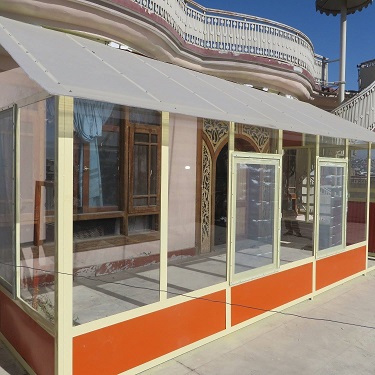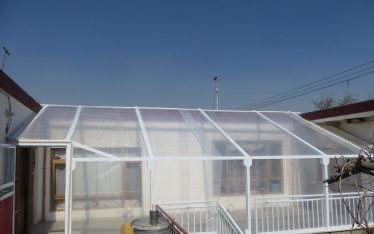
The “Scaling up green homes in Kabul towards sustainable energy consumption and low emission development”, more simply named Kabul Green Homes Project was a Fife-year initiative 2016 – 2020 funded by EU and AFD,
The project was implemented by a consortium led by Geres, and the RMO role was the entire field activity which has been implemented in close collaboration with Kabul Municipality.
With a broader objective to produce large-scale and market driven Energy Savings Solutions (ESS) and ensure uptake of their consumption by individual households in Kabul, the project intends to contribute to:
- Economic growth by supporting SMEs, business intermediaries and entrepreneurs.
- Poverty reduction by targeting vulnerable households, in a fragile position in regard to energy poverty.
- Climate change mitigation & Adaptation by promoting Energy Savings Solutions in Kabul and beyond as a good practice for other cold climate areas in the neighborhood regions.
The typical Energy Savings Solutions promoted by Geres and its partners range from solar passive verandas, thermal insulation packages, improving local kitchens, renewable energy solutions such as biogas digesters and solar cookers.
The project reached or even overshoot several of its objectives with 717,687 people informed through awareness campaigns, while the target was 700000. 135 SMEs and/or craftsmen specialized in ESS production, 87 of them further involved in ESS promotions, over 4,755 houses equipped with ESS while project target was 4500 houses to be equipped.
Eighteen (18) types of awareness tools have been designed, developed and published. So far, a total of 38,766 awareness tools of flyers, brochures and leaflets have been distributed to the targeted stakeholders during awareness meetings, conferences, workshops, trainings and so.
The project team organized several workshops and project steering committee meetings and actively participated in national and international events on energy, environment and climate change.
Energy efficiency monitoring (or winter monitoring) was implemented during winter 2019 – 2020, and the draft analytical report shows outstanding fuel and CO2 savings from the implemented ESS.
Totally 179 people or staff of Governmental and non-governmental organization including the project staff were trained on environmental, climate change aspects with technical information of approved ESS techniques,
Project team has organized a national conference in close coordination with National Environment department of the government, and one conference with Kabul Municipality at the end of the project where we have shared the outcome, achievement and challenges.
Below is few key figures of the project outcomes:
Poverty reduction: the winter monitoring 2019/2020 shows an average of 41.5 % heating fuel savings, which is ca 70 Euros per ESS per winter.
Economic effects: SMEs surveyed show around 18.24 % of growth and increased their workforce by 36%. The households reported significant fuel reduction, considering fuel prices each household could save an average of 70 Euros per winter per ESS.
Environmental impact: winter monitoring noticed significant fuel reduction, and since over 90% of heating fuel is biomass (KGHP baseline 2016), the average amount of CO2 saved per ESS is 1.3 metric ton per year per ESS, totally 4.696 metric ton CO2 saved per year of 4,755 implemented ESSs (winter monitoring, 2017, 2018 and 2019).

